Bling Where It’s Least Expected
Anyone who’s ever gone fishing with a flashy lure or held a baby while wearing blingy earrings knows that shiny things are attractive. There’s a magnetic draw to them. In fact, recent research suggests humans are innately drawn to shiny surfaces because they reflect an age-old quest for fresh water to ensure our survival. Thirsty or not, we can easily infuse our lives and homes with shine — at a minimum to ward off the threat of monotony. One way is by using metallic tiles.
Metal tiles gained popularity in the past decade or so with the explosion of stainless steel kitchen appliances, and stainless steel tiles were (and still are) great harmonizers. However, they’ve also made their way out of the kitchen — and all that glitters isn’t always stainless steel. Tiles are available in different metals, including bronze, copper and titanium, as well as different surfaces, such as brushed, polished and textured.
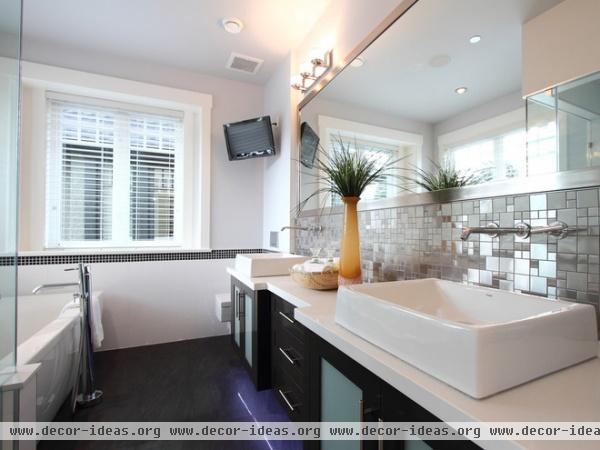
Metal tiles come in a bevy of shapes, sizes and patterns — basketweaves, herringbones, rocks and dots, to name a few. This bathroom’s cobblestone pattern, by Eden Mosaic Tile, has mixed polished and brushed surfaces that create a retro layered effect.
Most metal tile is fabricated and sold on mesh sheets, which helps with installation speed and alignment. Approximately 1-square-foot sheets are the most common.
Metal tiles aren’t all made the same, though. Some are made of solid metal, while others have a porcelain or resin body wrapped with a metal finish coating. Be sure to check with the manufacturer on the details of the product. Depending on the area of application, budget and performance expectations, you may want to go with one type over another. The cost for wrapped tile material generally ranges from about $16 to $75 per square foot.
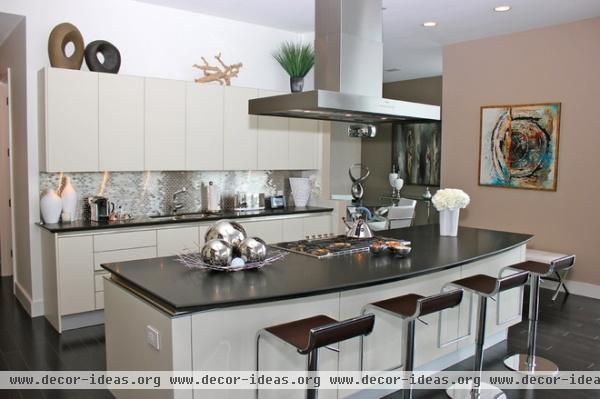
Backsplashes
Backsplashes are probably the most popular application of metal tile. Although usually installed on only a fraction of the wall space, they provide a powerful punch.
This kitchen wouldn’t have the same appeal (or light) if not for the reflective quality of these miniature stainless steel subway tiles. The designer specified LED lights underneath the cabinets to accentuate them.
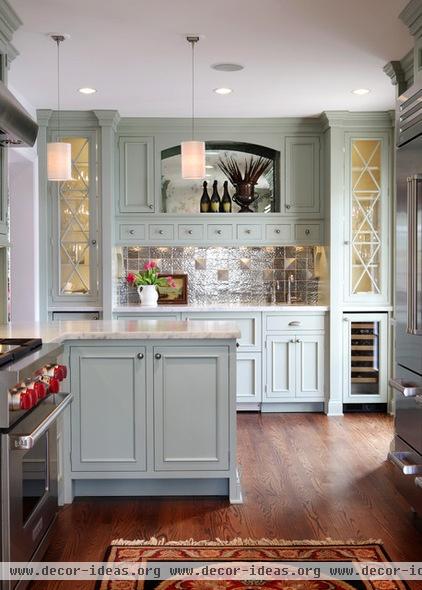
Because of the fluid nature of metal, most metal tiles have a clean, sleek look that supports a very contemporary aesthetic. However, the installation shown here carries over well into a transitional or traditional setting. The textured surface of these tiles (which the designer says are no longer available) is reminiscent of pressed tin.
Crossville is one of several manufacturers that sells textured metallic tiles. Crossville’s are made of metal covered resin or porcelain. They require a 4½-inch distance between the tile surface and a heating element, such as a stove — something to keep in mind when using a wrapped metal tile product on a kitchen backsplash.
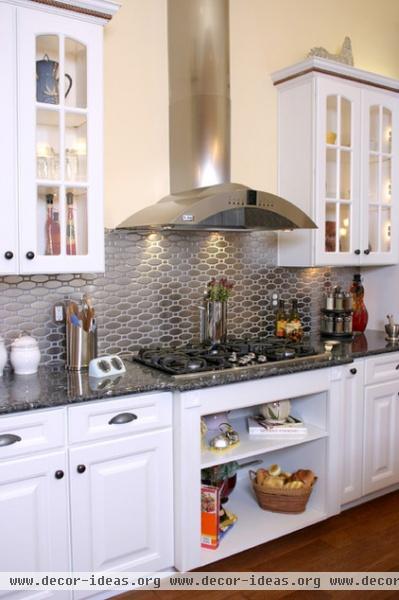
It is recommended that metal tile installations be done by a highly experienced professional tile installer. Metal tile’s most distinguishing attribute, its sheen, can also be a detriment. Any flaw in the underlying surface or a minutely crooked tile or sheet will be amplified tenfold by its reflective surface. Typical installation instructions require the installer to use a new saw blade (the type specified varies) with the metal side facing upward to minimize spurs in the metal finish.
If your backsplash installation ends in the middle of the wall instead of a corner, any cut tile pieces will show the porcelain or resin body. Some manufacturers make coordinating trim pieces with a finished edge, called a bullnose, to hide the raw edge of the cut tile. However, some don’t. This installation does not have a trim piece where it stops at the vent hood. But it would have been too high to see anyway.
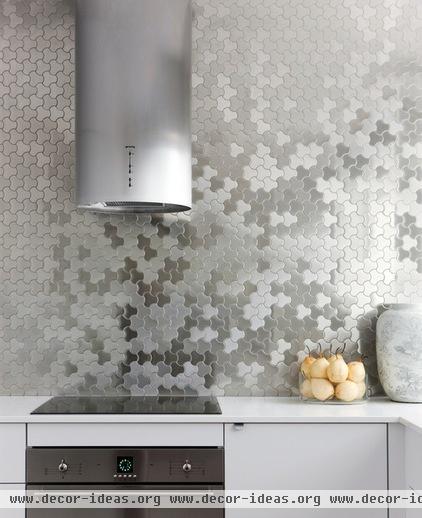
Walls
Take backsplash tile installation one step further with an entire feature wall. The benefit is that it creates a unified surface that’s a dramatic feature void of material changes.
This kitchen wall has a solid metal product made by Australian company Alloy. Alloy’s solid tile is punched from a single sheet of the highest-quality metal; it runs $26 to $138 per square foot.
Solid products are different than metal-wrapped products in that they cannot be cut onsite by the installer. Alloy founder Jonathon Worner says the company provides a complimentary detailed architectural drawing in AutoCAD using the customer’s dimensions to create factory-made finished edge tiles where needed.
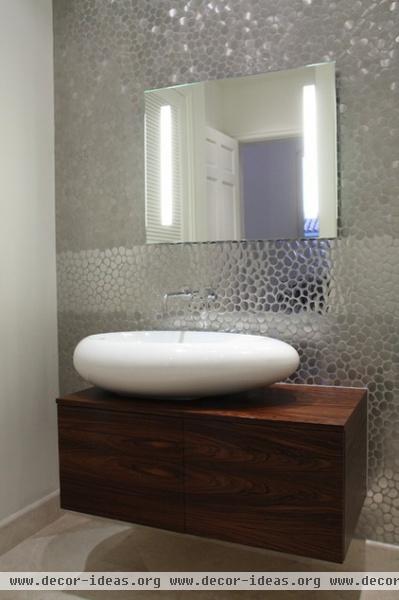
Using more than one metal tile pattern on the wall creates a dramatic look. This bathroom has a polished river rock tile on the bottom and a brushed tile on the top. It looks as if the wall has been dipped into water.
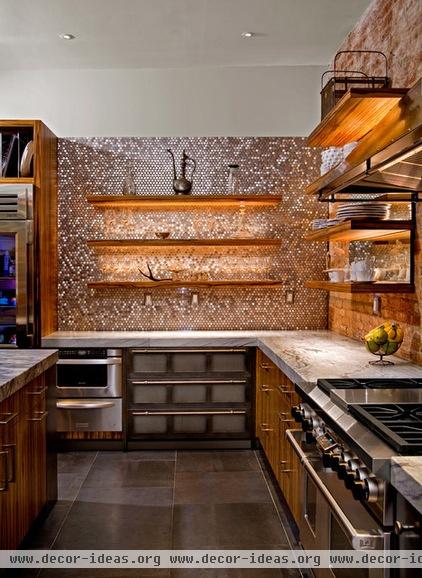
A penny for your thoughts? The copper penny tile by Casale Tile makes this kitchen memorable. This material runs $47 per sheet, which is close to a square foot. It’s made of porcelain tile encased in copper.
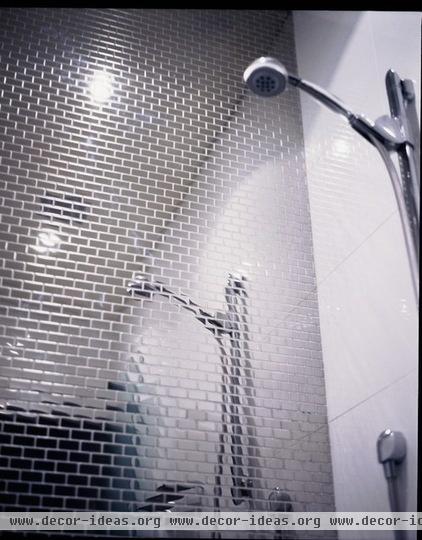
Showers
Alloy’s mirror polished stainless steel subway tile will brighten the bleakest of mornings.
Water spots and maintenance may come to mind. Hard water is a challenge for all surfaces, and regular cleaning with a mild detergent and water will keep mirrored finishes looking clear. If there is a buildup of lime or calcium deposits, a light-duty white scouring pad can be used to wipe over the surface with a mild detergent. (Stay away from those abrasive green pads!) For brushed finishes, wipe in the direction of the pattern.
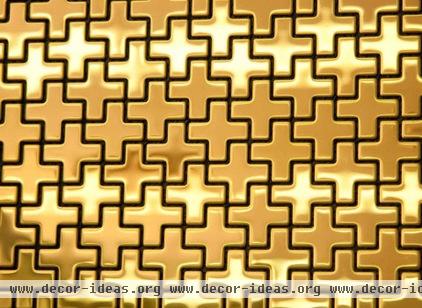
Swiss Cross Titanium Tiles Here’s an example of a solid titanium mirror finish in gold. Titanium is a great option for homeowners interested in a look similar to copper or brass, but who want to maintain the bright finish. Alloy’s copper and brass finishes will patinate (darken) over time, unless they are sealed with wax.
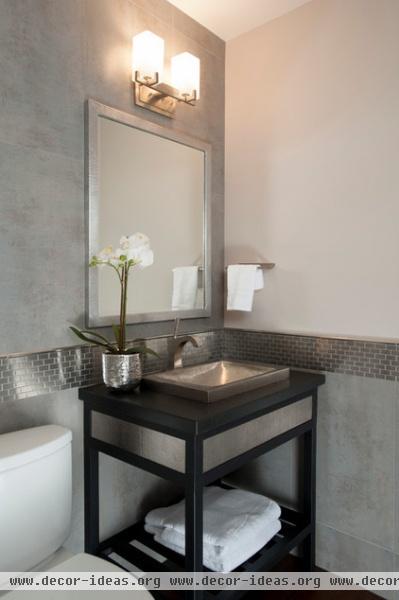
Borders
If an entire wall or backsplash is too much for you, try a wall border. Because of its location, this one actually doubles as a sink splash. A metal trim piece finishes this installation off where it meets the wall surface.
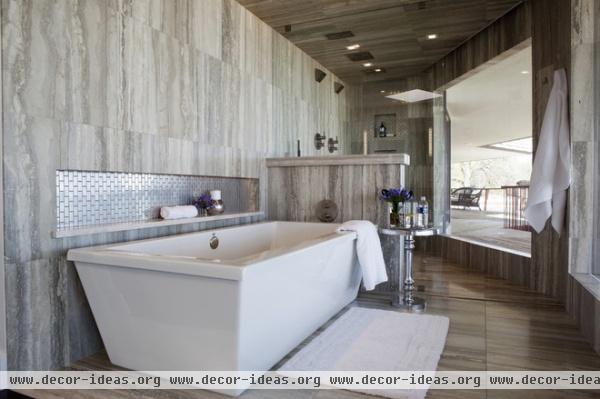
Niches
A niche is a great surface for metallic tile. As inset surfaces tend to be darker, the reflection from the vertically installed subway tile adds luminosity to the bath shelf here.
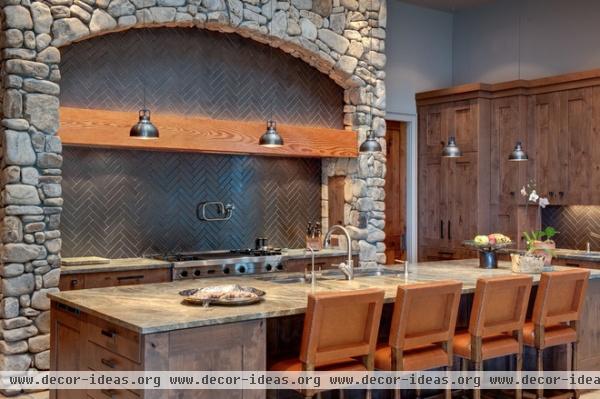
Most metal tile installations look best with a grout color that matches the metal. Otherwise the contrast distracts from the subtlety of the metal finish. All metal tiles must be installed with unsanded grout. Sanded grout will permanently scratch and damage the surface of the tile. Check with the manufacturer for the appropriate adhesive for your particular metal tile.
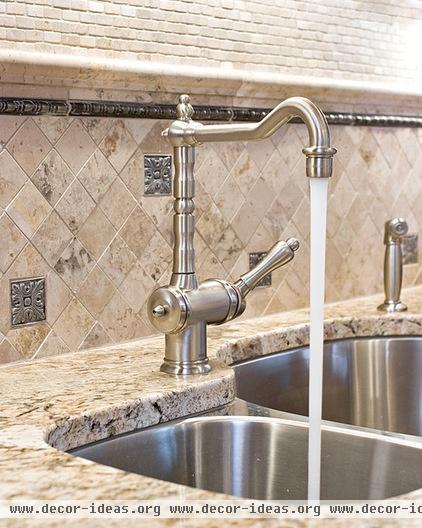
Accents
If you want just a touch of metal, try decorative tiles’ they look great as accessories to a larger ceramic, porcelain or stone tile installation. The design possibilities are endless. While they’re suitable for the wall, always check with the manufacturer whether floor installations are viable.
One consideration is the thickness of the decorative tile in comparison to the surrounding tile. Most metal tiles are thinner than their porcelain and ceramic counterparts, meaning when installed, they appear inset or lower than the surrounding tile. Some people like this look, as it is a bit rustic. If not, building up the height disparity with a bit more adhesive may be a solution.
Another consideration is size. A 2-inch by 2-inch decorative tile may not be the same actual dimensions as another tile labeled as the same size. The term “nominal” in a tile size is for identification purposes only and doesn’t take into consideration tolerances.
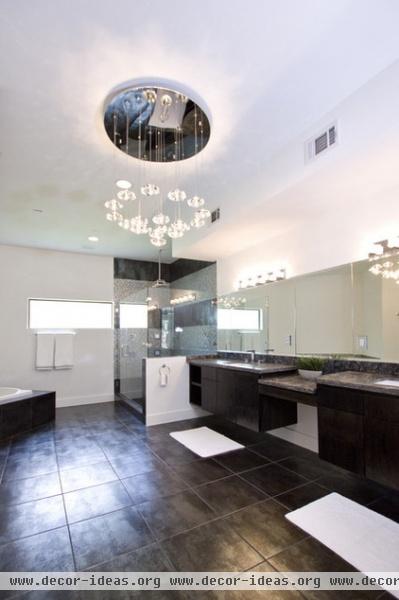
Floors
If a metal look underfoot is more your thing, consider this tile made by Eleganza. It has a porcelain body with a metallic oxide glaze.
More:
7 Great Places for a Hammered Metal Finish
5 Places to Love Corrugated Metal in Your House












